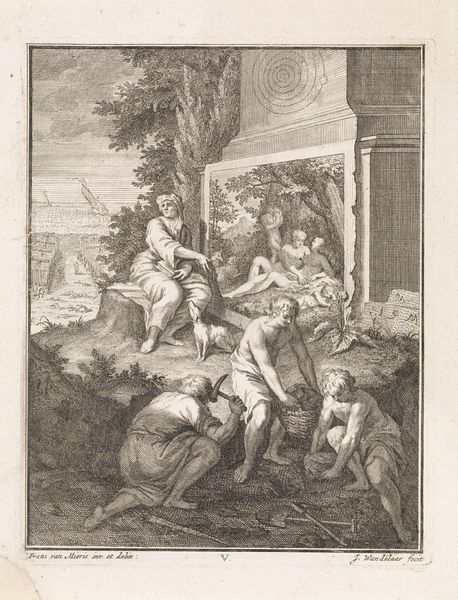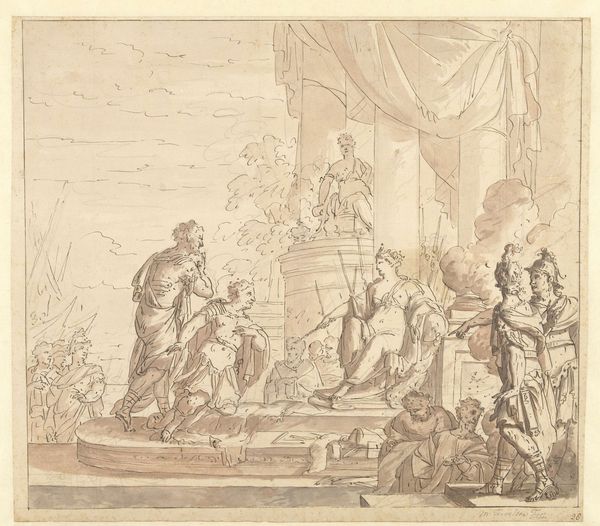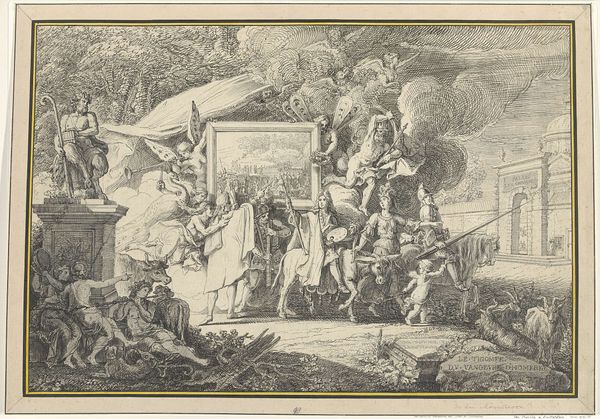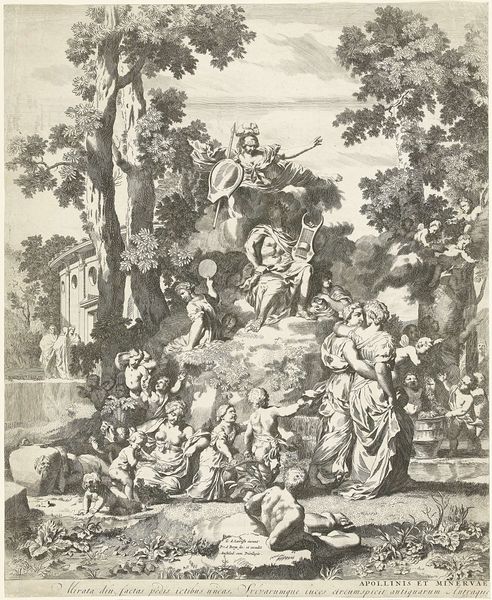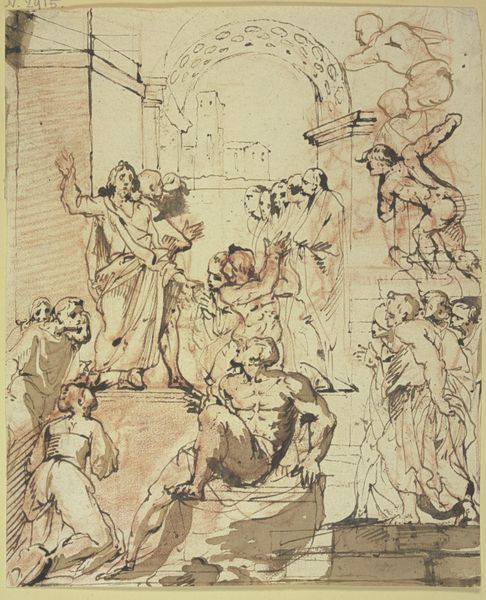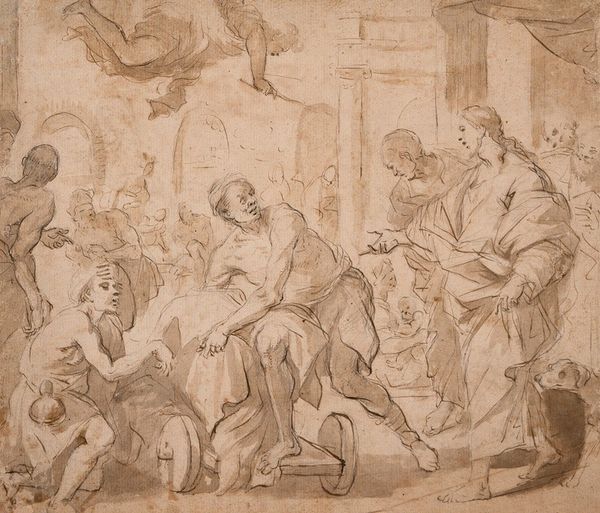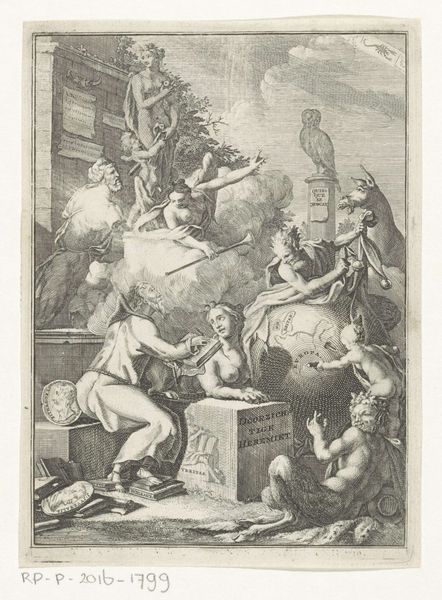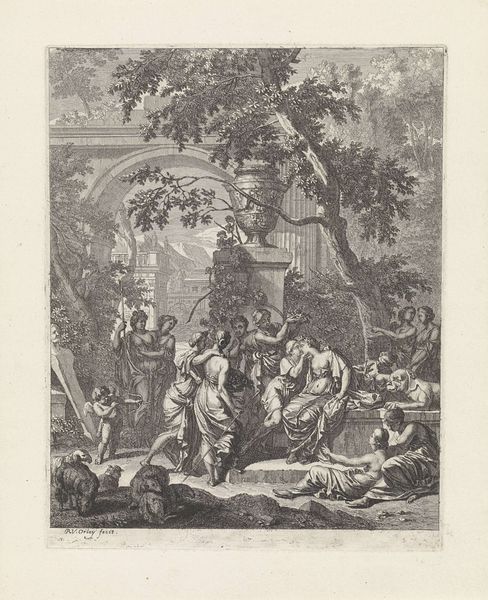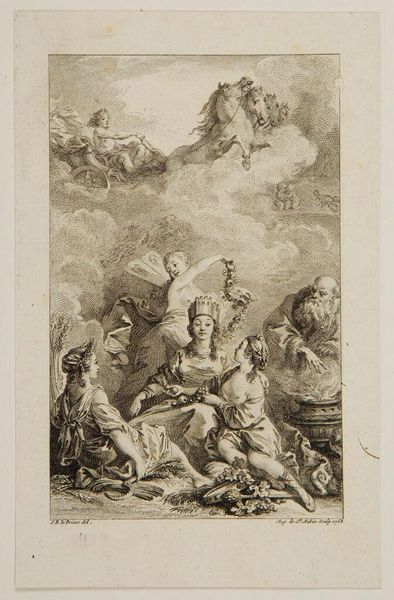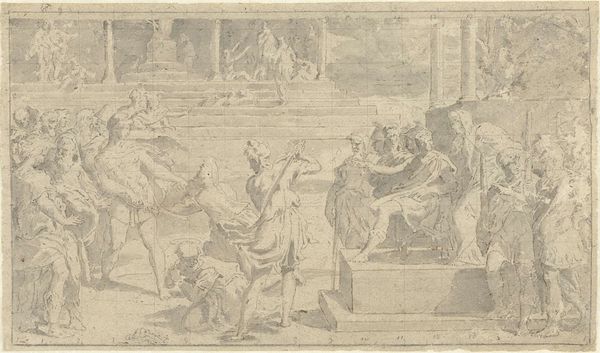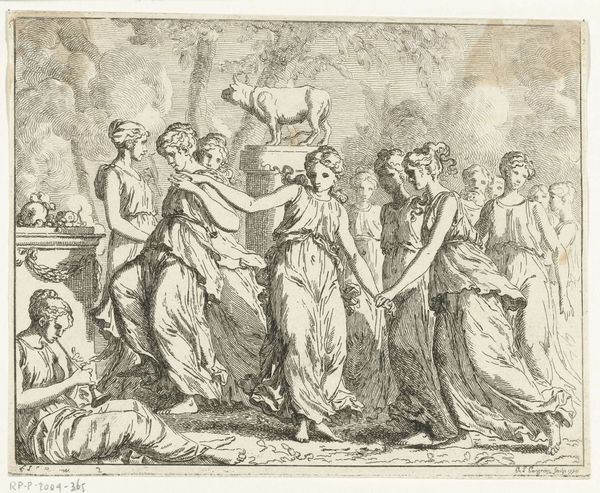
Copyright: Public Domain: Artvee
Jean-Honoré Fragonard created this ink wash drawing, titled "The Burial Place of Saint Andrew," during a period when the Catholic Church wielded significant power. It depicts the burial of Saint Andrew in expressive, fluid lines. What strikes me is the emotional charge – the grief and reverence – captured in the figures' postures and expressions. Fragonard, working in 18th-century France, was navigating a society deeply shaped by religious norms, yet also on the cusp of revolutionary change. Notice how the women in the left of the drawing huddle together in distress while the men are charged with physically bearing the Saint. The figures are idealized, their bodies reflecting the classical aesthetic, yet their humanity shines through. Fragonard’s work reflects the shifting cultural landscape, where traditional narratives were being questioned and new forms of expression were emerging. It invites us to reflect on the role of religion in shaping personal and collective identities, then and now.
Comments
No comments
Be the first to comment and join the conversation on the ultimate creative platform.
